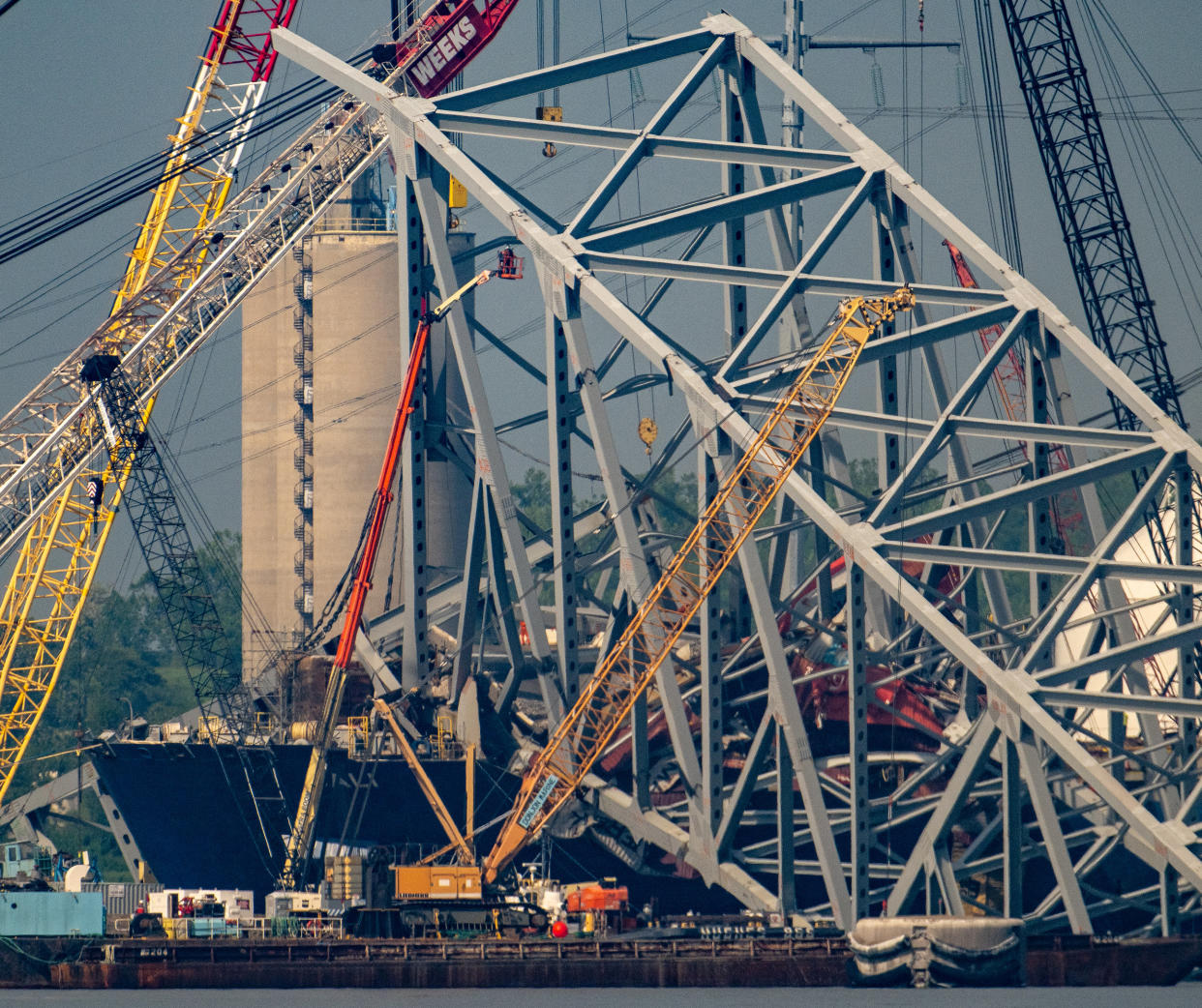Controlled demolition of Key Bridge piece atop Dali delayed by lightning, to take place Monday

The salvage of a 984-foot container ship with millions of pounds of bridge material sitting atop it can be unpredictable.
After authorities said last week that they would be using explosive devices to break up the span, Tom Gilmour, a retired Coast Guard rear admiral who is a maritime consultant, joked about scheduling the event.
“You’d be better off picking a team for March Madness than picking the right day,” he said.
That uncertain timing, given the medley of factors at play in a complicated salvage, including the weather, has proved correct. After initially scheduling the controlled demolition for Saturday, authorities postponed it until Sunday when weather complicated preparation efforts. Then, on a rainy Sunday afternoon, the delayed detonation was again rescheduled due to lightning within 10 miles of the ship, Key Bridge Response Unified Command said in a statement.
It is now tentatively scheduled for around 5 p.m. Monday.
The Dali, a cargo ship with thousands of containers on it, has sat in the Patapsco River since it appeared to lose power in the early hours of March 26, slamming into one of the Francis Scott Key Bridge’s support piers, tumbling the span into the water and killing six construction workers. In the nearly seven weeks since, crews have worked to clear the debris in an effort to reopen the shipping channel. The detonation will mark the most dramatic effort yet to free the ship, which is expected to be pushed to the Port of Baltimore roughly two days after the piece of bridge is sliced up with the explosives.
A chunk of Interstate 695 weighing 8 million to 12 million pounds has been draped over the front of the Dali since the collision, posing one of the most challenging aspects of the salvage. Crews have cut into that portion of bridge, placing small charges inside the cuts and then encasing those cuts with wraps similar to large piece of tapes. During the detonation, the 21-person crew still aboard the Dali will shelter in place.
People within 2,000 yards — a zone that mostly covers water but does include a few businesses on Hawkins Point — are asked to wear hearing protection during the blast. After the detonation, the ship is expected to remain grounded. Authorities will then, in a slow and controlled fashion, free the vessel during high tide.
The explosions will last just a few seconds. The pieces of bridge are expected to fall into the water, where they will later be cleaned up.
“From a distance, it will sound like fireworks or loud thunder and appear as puffs of smoke,” Unified Command has said.
_______

